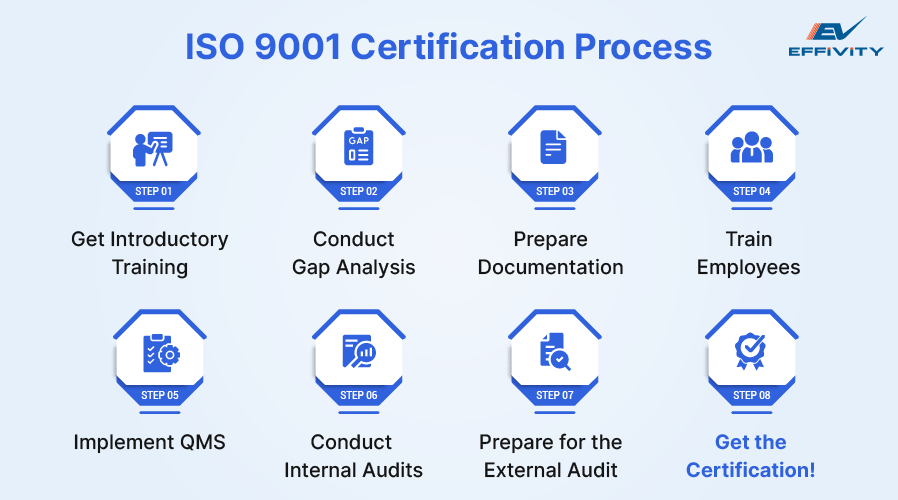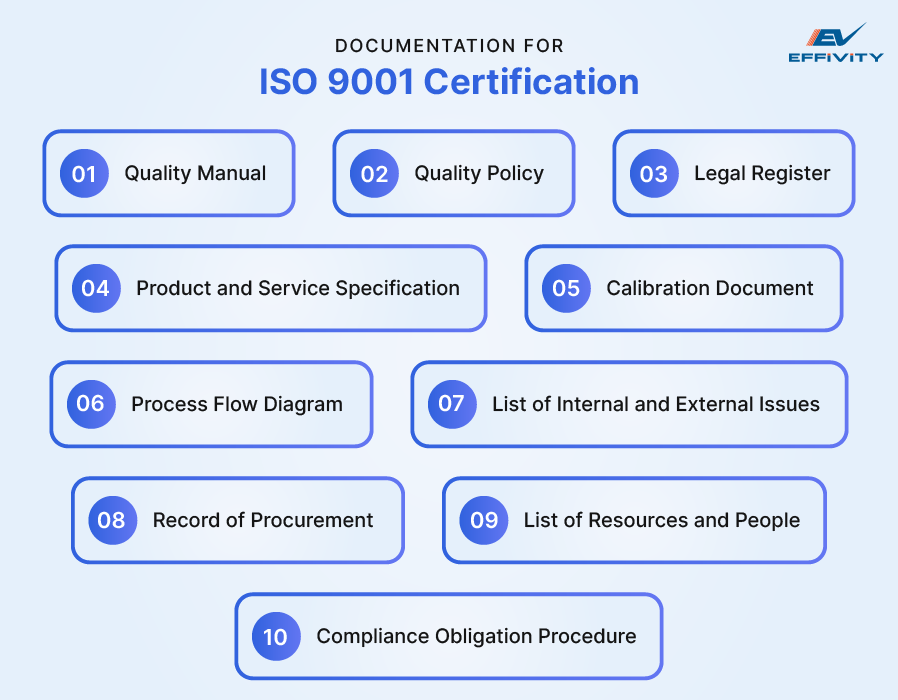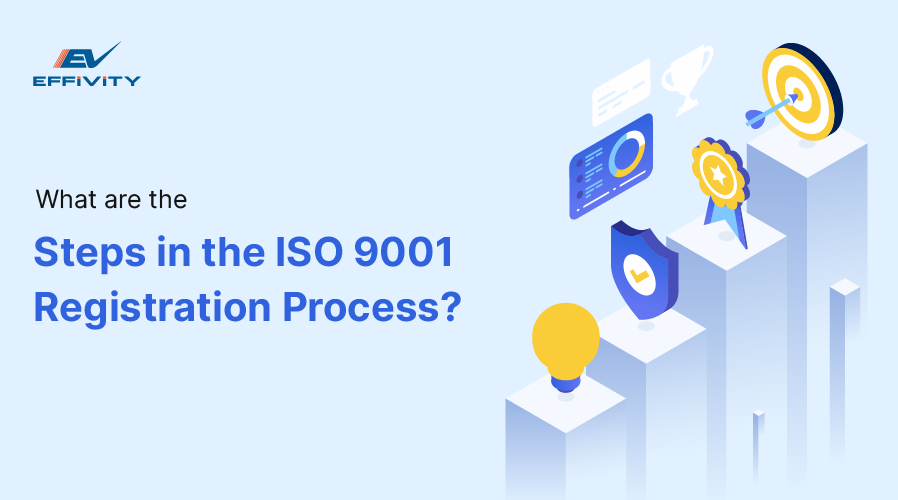An ISO 9001 certification is like a golden ticket for a business. It proves your credibility, quality, and performance.
It isn’t just a nice-to-have badge, but a smart and strategic move to show your commitment to maintaining high standards.
Getting ISO-certified sure sounds easy, but it’s far from being just a “check the box” process. There’s a lot that goes behind the scenes—from preparing detailed documentation to running audits.
So, if you’re wondering about the ISO registration process, you’ve reached the right place. Scroll down to learn about the step-by-step procedure for getting ISO 9001 certified.
What Is ISO 9001 Certification?
If you have a quality management system, then you’re probably aware of the ISO 9001 standard. It is the guardrail that helps businesses maintain quality in their products, services, and operations.
The ISO 9001 standard lays out guidelines for an ideal QMS. And the ISO 9001 certification demonstrates if a QMS meets the criteria set by the 9001 standard.
How to Get ISO 9001 Certified
Here’s how to register for ISO certification:

1. Get Introductory Training
ISO 9001 is a complex framework, and it’s easy to get lost in the weeds without proper training. So, make sure your entire leadership team is speaking the same language, i.e, what ISO 9001 is and why it matters.
In this training, you’ll learn about the core principles of quality management systems like customer focus, risk management, and continuous improvement.
You’ll also understand how the standard applies to your business and how to embed these requirements into your day-to-day operations.
2. Gap Analysis
Gap analysis gives you an idea of how close (or far) you are to meeting the ISO 9001 standards. It’s like a health checkup for your business—you’ll come to about the loopholes in your quality process and ways to fix them.
So, how do you conduct a gap analysis?
You can begin by reviewing your existing processes. For example, how do you manage customer feedback? Or what is your documentation procedure?
Find out if these processes are unnecessarily complex, outdated, or simply not effective enough. You must also pay attention to how closely your employees follow the set guidelines.
It’s always best to bring in an external consultant to spot issues that you might overlook. Once you’ve identified the gaps in your system, it’s time to prioritize them according to your business goals.
3. Prepare Documentation
 Preparing documentation is one of the most crucial steps in ISO certification registration. Because it’s impossible to prove that you’re consistently meeting quality standards there’s no clear evidence.
Preparing documentation is one of the most crucial steps in ISO certification registration. Because it’s impossible to prove that you’re consistently meeting quality standards there’s no clear evidence.
Don’t get overwhelmed by this step, it’s pretty easy to tackle if you know how.
Start by reviewing all your existing documents—process flowcharts, audit records, incident reports, procedural guides, quality manuals, etc. And if you don’t have such documents, you’ll need to create them from scratch.
Don’t forget about other key documents like policies, SOPs, work instructions, employee manuals, and so on. Each of these demonstrates how your processes meet ISO standards. So, don’t underestimate and skip either of them.
4. Train Employees
Business owners often forget that ISO 9001 certification isn’t just a top-down initiative; you must involve everyone in your organization, including your employees.
So, make sure you provide your employees with proper training regarding the ISO 9001 certification. They must not only understand what’s changing but also why it’s changing.
In addition, you can offer role-based training—like how their specific roles can contribute to meeting quality standards.
Remember, the more your team buys into the certification process, the smoother things will go.
5. Implement QMS
QMS implementation means putting your documented processes into action across your organization. This is where theory meets reality.
First, make sure everyone knows their specific roles under the QMS. Second, management must lead by example to ingrain a culture of quality in every department.
As you implement, monitor how well your quality management system works in practice. It’s okay if something doesn’t work as expected—this is your chance to fine-tune your QMS before external auditors knock at your door.
6. Conduct Internal Audits
An internal audit is like a revision before an exam. It makes sure you’re ready for the external audit.
During this process, your focus must be on two things:
- Whether the QMS complies with the ISO 9001 standard
- How effectively is the QMS implemented across your organization
Check everything from process documentation to execution. Go through each department with a fine-tooth comb to not just pinpoint mistakes but find areas for improvement.
Document the findings of the internal audit and take necessary corrective actions as soon as possible. The more thorough you are at this stage, the smoother the external audit will be.
7. Prepare for External Audit
To prepare for an external audit, make sure all your ducks are in a row. That means, having your documentation complete, your processes consistent, and your team ready to answer questions that the auditors might throw at them.
External auditors will likely spend time reviewing your QMS documentation, interviewing employees, and observing day-to-day operations to check everything is as it should be.
So, minimize any surprises by handling any lingering issues and boosting your team’s confidence before the big day.
8. Get the Certification
If the ISO 9001 registration process goes well, you’ll be rewarded with your ISO 9001 certification. But hold on—this isn’t the finish line.
ISO 9001 is all about continuous improvement. So, your QMS should evolve with your business. Remember, certification is just the start; maintaining and improving it is where the real work happens.
Conclusion
Getting ISO 9001 certification is a long journey, but it is a non-negotiable one. Unless you invest in ISO 9001-certified quality management software.
That’s where Effivity steps in.
With built-in ISO 9001 modules, our system removes the stress of getting certified without compromising quality. It streamlines documentation, tracks internal audits, and keeps you compliant—no extra effort is required.
Talk to an expert today to get started.






























